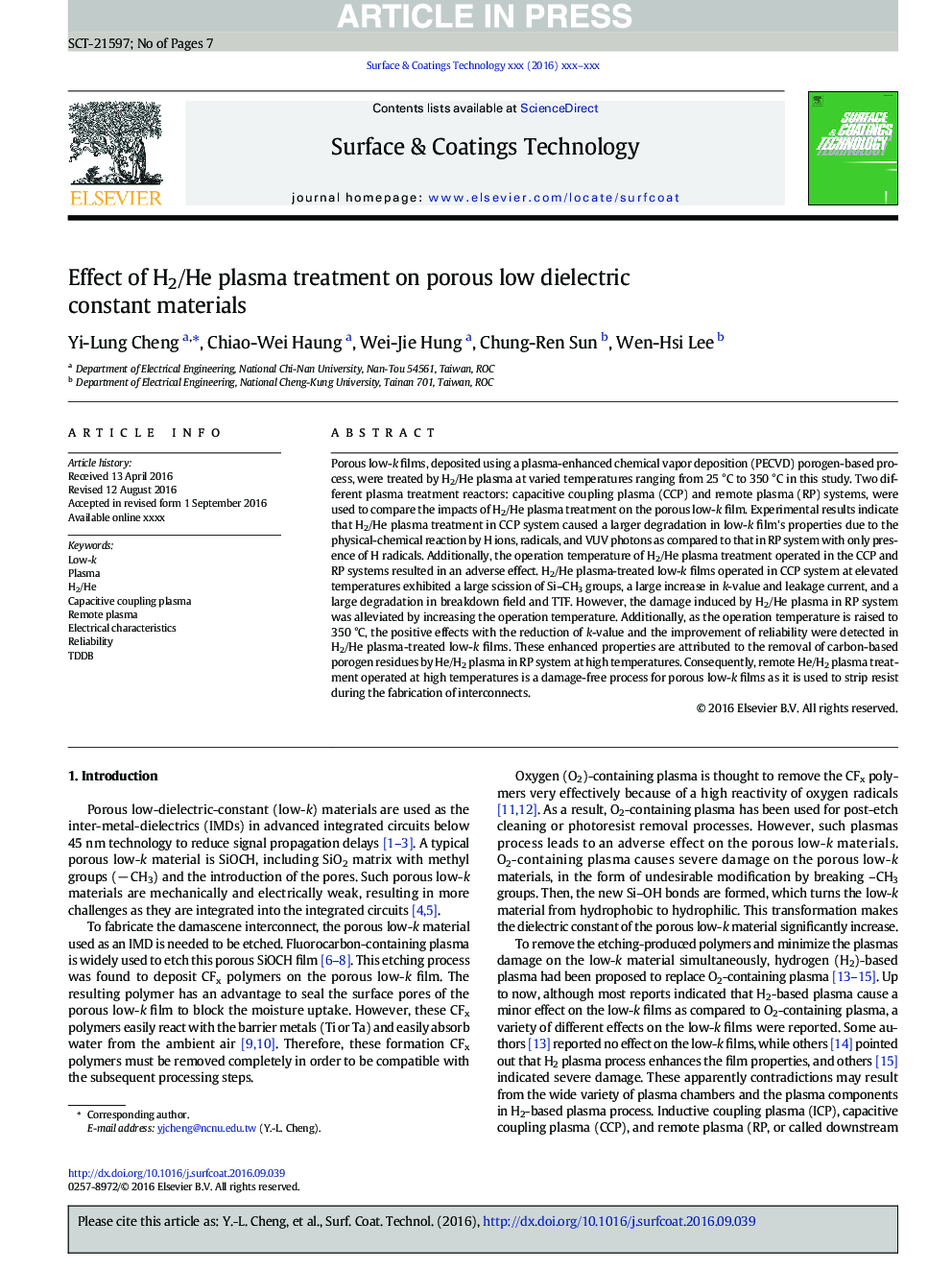| Article ID | Journal | Published Year | Pages | File Type |
|---|---|---|---|---|
| 5464893 | Surface and Coatings Technology | 2016 | 7 Pages |
Abstract
Porous low-k films, deposited using a plasma-enhanced chemical vapor deposition (PECVD) porogen-based process, were treated by H2/He plasma at varied temperatures ranging from 25 °C to 350 °C in this study. Two different plasma treatment reactors: capacitive coupling plasma (CCP) and remote plasma (RP) systems, were used to compare the impacts of H2/He plasma treatment on the porous low-k film. Experimental results indicate that H2/He plasma treatment in CCP system caused a larger degradation in low-k film's properties due to the physical-chemical reaction by H ions, radicals, and VUV photons as compared to that in RP system with only presence of H radicals. Additionally, the operation temperature of H2/He plasma treatment operated in the CCP and RP systems resulted in an adverse effect. H2/He plasma-treated low-k films operated in CCP system at elevated temperatures exhibited a large scission of Si-CH3 groups, a large increase in k-value and leakage current, and a large degradation in breakdown field and TTF. However, the damage induced by H2/He plasma in RP system was alleviated by increasing the operation temperature. Additionally, as the operation temperature is raised to 350 °C, the positive effects with the reduction of k-value and the improvement of reliability were detected in H2/He plasma-treated low-k films. These enhanced properties are attributed to the removal of carbon-based porogen residues by He/H2 plasma in RP system at high temperatures. Consequently, remote He/H2 plasma treatment operated at high temperatures is a damage-free process for porous low-k films as it is used to strip resist during the fabrication of interconnects.
Related Topics
Physical Sciences and Engineering
Materials Science
Nanotechnology
Authors
Yi-Lung Cheng, Chiao-Wei Haung, Wei-Jie Hung, Chung-Ren Sun, Wen-Hsi Lee,
